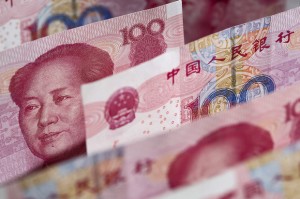Each year, when the Chinese Lunar New Year holiday rolls around, countless Chinese citizens engage in the established practice of giving cash gifts to a large number of relatives and friends. A 64 year old retired school administrator, interviewed by the Wall Street Journal, said “she expects to give between 1,000 to 2,000 yuan ($165 to $330) in total, or about 200 yuan per kid for her grandchildren, other young relatives and their friends.” The Chinese central bank, the PBOC, has already injected “375 billion yuan into the banking system,” which adds on to the 29 billion yuan injected on December 31, “to alleviate the funding squeeze.”
The PBOC has been concerned with rising debt levels within the nation. As Liu Jing writes, “The central bank since this summer has been adjusting liquidity in the financial system to send a message to China’s banks about their lending practices, allowing rates to spike at times to send a signal about rising debt levels and slowing economic growth.”

I think the economic activities during the Lunar New Year Period is same as the one that the Americans go through on the Black Friday. Chinese spend a lot of money for celebrating the New Year.
Also, as we talked about it in the previous posts, China is concerned about high local debt and other kind of debts. We will see how China will respond.
I believe the Lunar New Year is related to the periodic decline in sales that occurs yearly. For example, Toyota’s car sales decrease almost every year around this time -which coincides with the widespread cash gifts. To put simply, Chinese citizens save for cash gifts this time of year, not for cars and other various products. With increased cash holdings per citizen, sales should pick back up in ensuing months.
The PBOC will stay ahead of their public debt. They don’t want a melt down like happened here.
OK, so if I am correctly reading the report, the demand for cash increases on a seasonal basis in China, which clearly is not unique. Your generation (though perhaps not your parents) have forgotten the days in which credit cards were unusual, even in the US, so that banks had to build up cash reserves on a seasonal basis. Such considerations haven’t entirely vanished; you can readily go into the data the Fed collects on banks and check the amount of currency in circulation and held in banks. But watch out! – a lot of US data are seasonally adjusted, the “not seasonally adjusted” data may be the bottom of the page in the file list.
How does this tie in with gov’t–in particular, local/state–debt? Is private debt as much of a risk as gov’t debt? Comments?